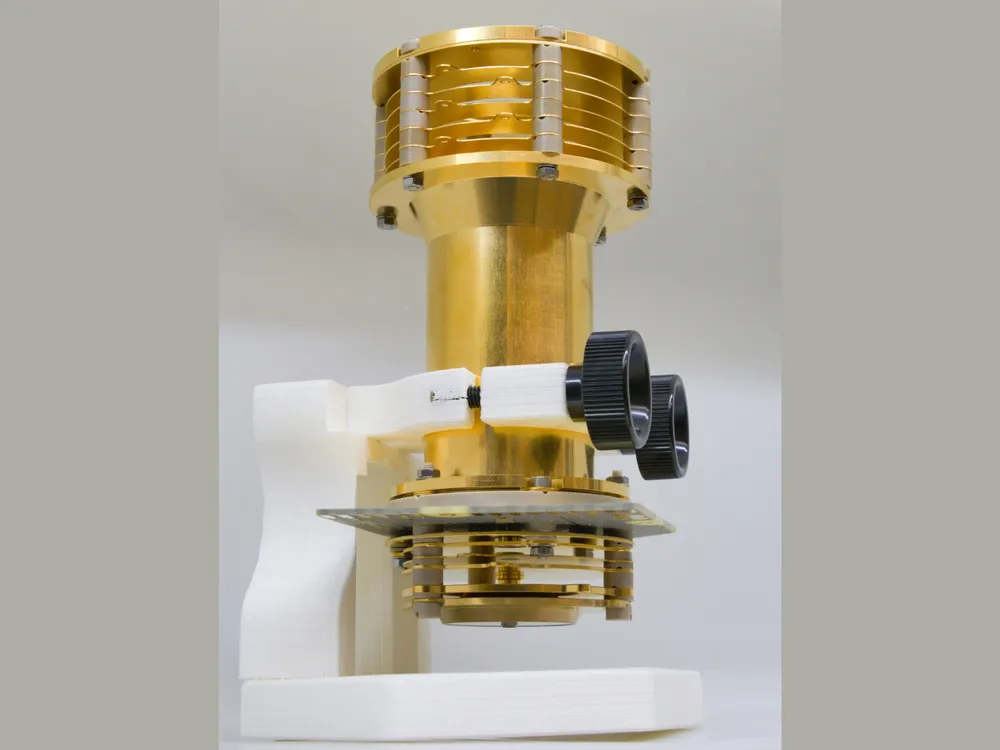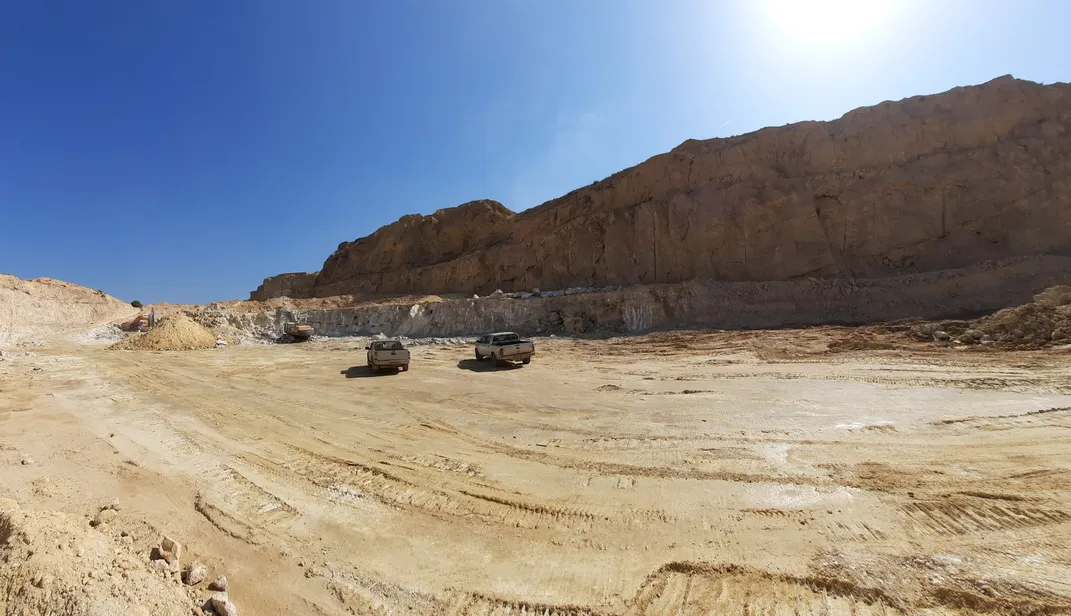Scientists Hope This Tool Could Identify Tiny Fossils on Mars, Revealing Hints to Potential Early Life on the Planet
If Mars ever hosted microorganisms in its bygone oceans, their fossils might still be preserved in minerals—and now, we have a new potential way to find them

Microorganisms first appeared on Earth in ancient bodies of water around 3.7 billion years ago. But while Mars might have hosted substantial bodies of water around the same time, it’s tough for scientists to determine whether these otherworldly pools also harbored microbial life.
If organisms once dwelled in the bygone Martian oceans, they might have left behind tiny fossils in certain minerals. Now, researchers have found a technique to identify evidence of such microfossils on Earth—and they say the same technology could be used on future missions to Mars. Their work is detailed in a study published in February in the journal Frontiers in Astronomy and Space Sciences.
“Our findings provide a methodological framework for detecting biosignatures [evidence of life] in Martian sulfate minerals, potentially guiding future Mars exploration missions,” Youcef Sellam, a physicist at the University of Bern in Switzerland and lead author of the study, explains in a statement from the journal.
The team focused on a gypsum quarry in Algeria, which they suggest might parallel potential fossil sites on Mars. Around six million years ago, the Mediterranean Sea almost entirely evaporated, leaving behind minerals, such as gypsum, that hardened and trapped ancient bacteria as fossils within their layers. Much of the ancient water on Mars likely also evaporated, leaving behind deposits of sulfates. If microbial life ever developed in the red planet’s oceans, chances are that their fossils are preserved in these minerals—for which the gypsum in Algeria is an “excellent terrestrial analog,” Sellam says in the statement.
“Our study shows that gypsum can preserve fossil microorganisms and is able to preserve microbial life over long geological time periods,” Sellam explains in a University of Bern statement. “Deposits similar to [the gypsum ones] in Algeria that exist on Mars in the former Martian seas are, in our view, promising targets for astrobiological research and for the detection of life on Mars.”

The team thus needed to test a fossil-finding instrument that could both parse gypsum-like deposits and be compact enough for a space mission. Their tool of choice was a miniaturized laser ablation ionization mass spectrometer called LIMS, a tool used to identify unknown compounds developed at the University of Bern.
“It’s basically a laser beam hitting the sample,” Sellam explains to NPR’s Ari Daniel. “And this laser will vaporize part of the material, creating some atoms. You will have a spectra of the different elements that are existing in the rock,” allowing scientists to pinpoint chemical traces of ancient microbes.
“What this study in Algeria really does is it highlights that you can use chemical methods to infer that biology is in the mineral,” biochemist Bonnie Baxter of Westminster University, who wasn’t involved in the study, tells NPR. “And chemical methods are just a little more transferable to Mars.”
Sellam and his colleagues tested LIMS and an optical microscope on Algerian gypsum and found filament-like structures—previously identified as bacteria—within dolomite, clay minerals and pyrite. LIMS thus worked well on a terrestrial sample, but Space.com’s Keith Cooper points out that the team had a strong expectation of what they were going to find, which certainly won’t be the case for Martian deposits.
Prokaryotes (cells without a nucleus) facilitate the formation of both dolomite and clay minerals, so the materials could be potential biosignatures, even on their own, though ideally other observations would reinforce the finding.
“Distinguishing true biosignatures from abiotic mineral formations remains a challenge,” Sellam says in the Frontiers statement. “Additionally, Mars has unique environmental conditions, which could affect biosignature preservation over geological periods. Further studies are needed.”
Either way, the Algerian gypsum is “only” millions of years old, whereas any fossils in Martian samples would be billions of years old, which is another “big caveat,” Baxter says to NPR.
It remains to be seen whether LIMS will indeed be hitching a ride on an upcoming mission to Mars. The European Space Agency’s Rosalind Franklin rover is scheduled to launch for the red planet in 2028 with mass spectrometry technology, and scientists in both the United States and China are planning future Mars sample return missions.

